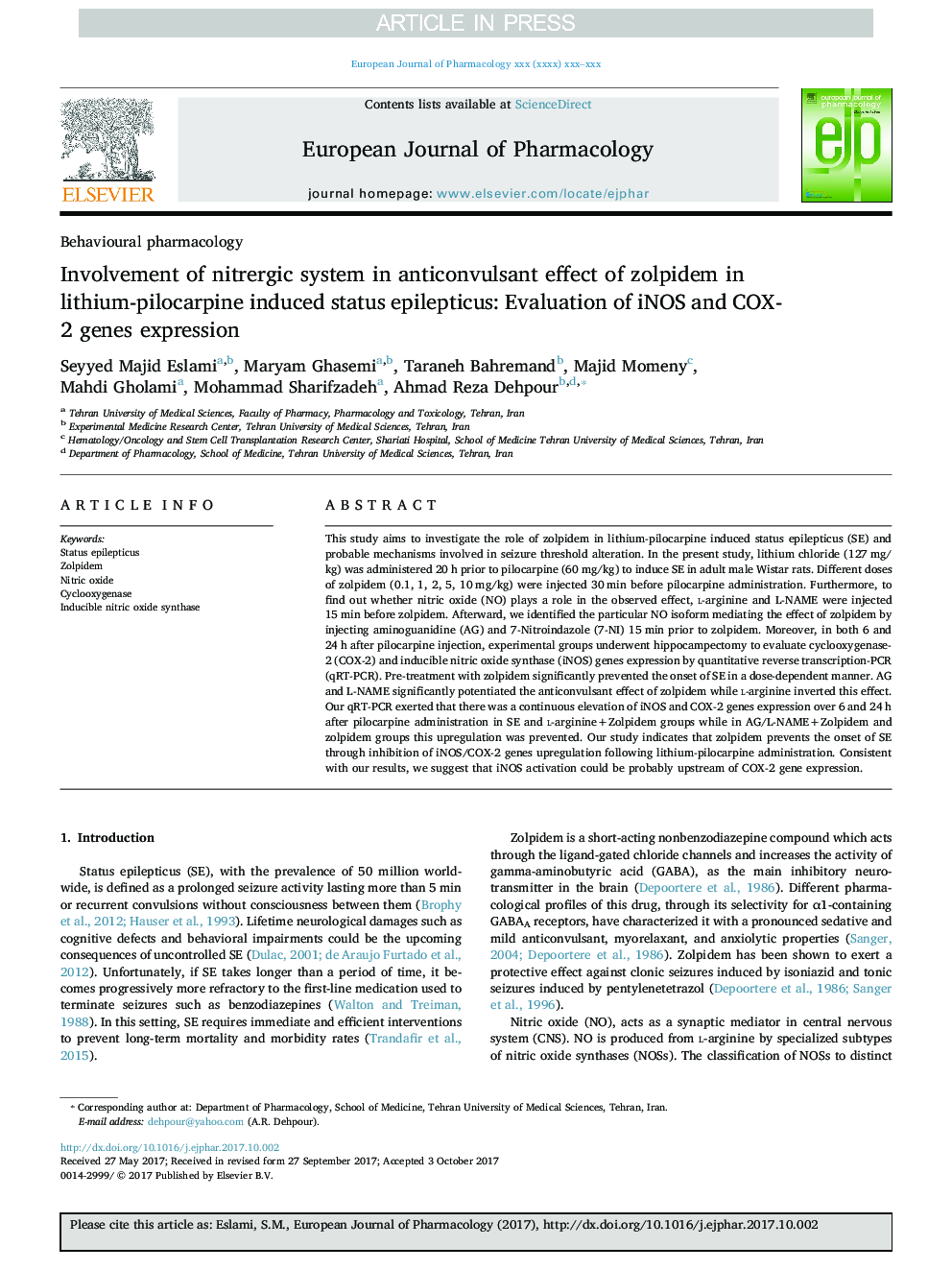| Article ID | Journal | Published Year | Pages | File Type |
|---|---|---|---|---|
| 8529990 | European Journal of Pharmacology | 2017 | 8 Pages |
Abstract
This study aims to investigate the role of zolpidem in lithium-pilocarpine induced status epilepticus (SE) and probable mechanisms involved in seizure threshold alteration. In the present study, lithium chloride (127Â mg/kg) was administered 20Â h prior to pilocarpine (60Â mg/kg) to induce SE in adult male Wistar rats. Different doses of zolpidem (0.1, 1, 2, 5, 10Â mg/kg) were injected 30Â min before pilocarpine administration. Furthermore, to find out whether nitric oxide (NO) plays a role in the observed effect, L-arginine and L-NAME were injected 15Â min before zolpidem. Afterward, we identified the particular NO isoform mediating the effect of zolpidem by injecting aminoguanidine (AG) and 7-Nitroindazole (7-NI) 15Â min prior to zolpidem. Moreover, in both 6 and 24Â h after pilocarpine injection, experimental groups underwent hippocampectomy to evaluate cyclooxygenase-2 (COX-2) and inducible nitric oxide synthase (iNOS) genes expression by quantitative reverse transcription-PCR (qRT-PCR). Pre-treatment with zolpidem significantly prevented the onset of SE in a dose-dependent manner. AG and L-NAME significantly potentiated the anticonvulsant effect of zolpidem while L-arginine inverted this effect. Our qRT-PCR exerted that there was a continuous elevation of iNOS and COX-2 genes expression over 6 and 24Â h after pilocarpine administration in SE and L-arginine+Zolpidem groups while in AG/L-NAME+Zolpidem and zolpidem groups this upregulation was prevented. Our study indicates that zolpidem prevents the onset of SE through inhibition of iNOS/COX-2 genes upregulation following lithium-pilocarpine administration. Consistent with our results, we suggest that iNOS activation could be probably upstream of COX-2 gene expression.
Related Topics
Life Sciences
Neuroscience
Cellular and Molecular Neuroscience
Authors
Seyyed Majid Eslami, Maryam Ghasemi, Taraneh Bahremand, Majid Momeny, Mahdi Gholami, Mohammad Sharifzadeh, Ahmad Reza Dehpour,
